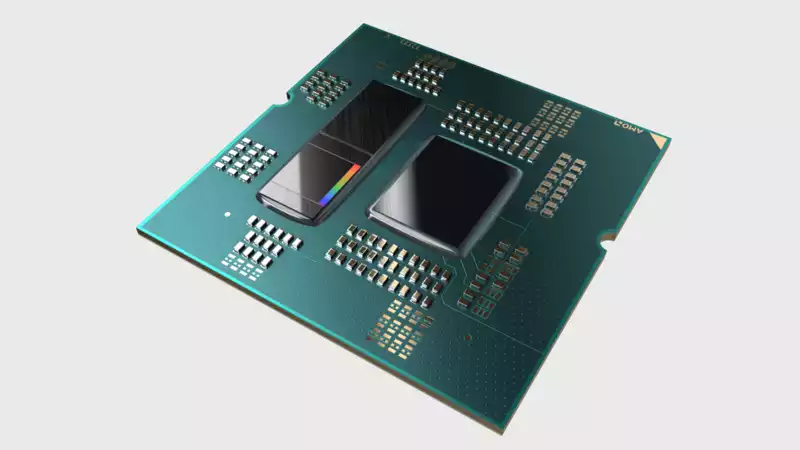AMD showed off its latest gaming CPUs at CES in Las Vegas, and they were both better and worse than we expected. The big news is that AMD has applied 3D V-Cache technology to the Ryzen 7000 series (open in new tab). And this time it's not one chip, but three CPUs.
Last time, only the Ryzen 7 5800X3D (open in new tab) came with 3D V-Cache to speed up gaming; with the Ryzen 7000, there are three CPUs available, expanded to 16 cores.
In case you missed it, 3D V-Cache is the use of 3D packaging to add memory on top of the CPU. Especially in games, adding cache memory can reduce the CPU's memory bus traffic and increase frame rates.
Anyway, the fun begins with the new 3D V-Cache version of the latest Ryzen 7000 series CPUs, the Ryzen 7 7800X3D. This is the direct successor to the Ryzen 7 5800X3D, a chip that many thought would be the only V-Cache product from the Ryzen 7000 series, obviously based on Zen 4 rather than Zen 3 technology, but retaining eight CPU cores and overall 104MB of L2 and L3 cache
.
This total cache volume is more than double that of the Ryzen 7 7700X without V-Cache, but only slightly more than the 100 MB of the 5800X3D. As for clock speeds, the 7800X3D tops out at 5 GHz, about 500 Mhz faster than the older chip.
Overall, according to AMD, the 7800X3D is over 15% faster than the 5800X3D in a variety of popular games. While these numbers may sound like enough of a boost, here's where things get complicated; AMD also announced the Ryzen 9 7900X3D and Ryzen 9 7950X3D 12-core and 16-core 3D V-Cache-powered chips. [These chips are clocked at 5.6 GHz and 5.7 GHz, respectively; AMD claims the 7950X3D is 9-24% faster in gaming than Intel's current top CPU, the Core i9-13900K. This means that AMD is currently touting its 16-core CPU as the top gaming chip, which makes little sense.
Few games scale beyond 8 cores; an 8-core 7800X3D should be sufficient. However, AMD limits the clock speed of this chip to 5 GHz, which is significantly lower than the 12- and 16-core variants. This is a different strategy from the Ryzen 5000 series,
where AMD released only one 8-core V-Cache model to stand alone as a clear gaming choice, leaving the 12- and 16-core variants as tools for broader computing and content creation.
This time, access to the highest clocked V-Cache chip, which is important for gaming, requires buying a lot of additional cores that offer little benefit for gaming. This is more than a little annoying.
This is especially true given the overclocking limitations of the 3D V-Cache chip. In the previous 5800X3D, AMD did not allow overclocking at all. With the new 7000 series V-Cache chips, that has been relaxed a bit. But only a little.
The new chips support both AMD's automatic overclocking Precision Boost Overdrive feature and the use of Curve Optimizer. However, manual frequency overclocking is not yet on the menu, so you cannot buy a 5 GHz 7800X3D and simply clock it up to the level of a 12 or 16 core model. Disappointing.
For now, the prices and start date for these new chips are unknown. However, please see this column for the latest information.


Comments